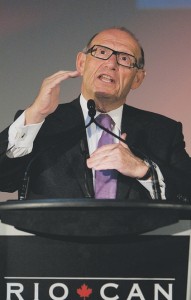Janice Kennedy
Sun
Language demons, again. My iPhone is out to get me. True, I’m crazy about the compact little devil, the newest gizmo in my life — but I believe it wants to destroy my reputation. It wants me to commit a sin. It’s trying to get me to perform an act of gross indecency against the language I love.
I discovered this recently as I composed an e-mail message with the word “its.” The little text tyrant that lives inside my iPhone kept correcting it to “it’s” — the contraction, rather than the possessive I wanted. Each attempt to override the text tyrant and its slyly inserted error was rebuffed until finally, after repeated determined assaults on the default “it’s,” I emerged victorious. An unadulterated “its” took its place proudly on the screen.
Still, it irked me that the contraction was the default, as I assume it is in all predictive texting. (And why? Surely, the possessive isn’t that rare.) It irked me that people thumbing away speedily on their devices must routinely appear to err, even when they do know better. And it irked me that, once again, our poor old English language is taking another mass usage hit, and no one seems to care.
According to today’s groupthink, if a message goes out saying “proper punctuation has outlived it’s usefulness,” so what? Everyone knows what you mean, right? Drives me nuts — both the error and the cavalier indifference to the error’s existence. I think it’s part of The Conspiracy.
Yes, that conspiracy. The conspiracy to abuse language, publicly and collectively. The conspiracy against which I can’t seem to stop railing, Cassandralike (though, really, everyone needs a hobby horse). I know I’m not alone in this. Partly from e-mail I’ve received, I know that there are all kinds of English-lovers who feel strongly that the public abuse of the world’s richest, liveliest language is something that should be addressed.
Such people must have been cringing along with me, throughout the otherwise magnificent games, every time the CTV Olympics theme played (as it did at least 9,724 times, conservatively estimated) — the one where singer Nikki Yanofsky extols the virtues of believing “in the power of you and I.” “Of you and I?” If it were singular, would she have sung “the power of I?” It is to weep. The song’s creators, Alan Frew and Stephan Moccio, are guilty of this assault on the language, but they’re hardly unique. Songwriters are notorious.
Does anyone remember that linguistic lulu in the execrable 1972 song, Play Me? It was the creation of Neil Diamond, composer extraordinaire of a massive oeuvre that also includes such numbers as the excruciatingly awful I Am, I Said. I mention this latter only as evidence of Diamond’s leaden touch, a song in which the singer tries to proclaim his very existence, although “no one heard at all, not even the chair.” (Chair? Chairs are supposed to hear?) But the linguistic mangling that has become a Diamond classic is this beaut from Play Me, an exercise in fingernail-on-blackboard painfulness: “Song she sang to me, song she brang to me.” Anything for a rhyme. Frew, Moccio and Diamond are just part of a continuing songwriting tradition that thinks nothing of manhandling language for the sake of musical convenience. If you can bear it, listen to hip-hop some time. Get beyond the tedious adolescence of the “poetry,” and you’ll discover that tortured rhyme is king, even when it massacres meaning.
Not to go all Cole Porter-y, or George and Ira Gershwin-y, or anything, but wouldn’t it be nice if songwriters — whose work finds its way on to every-one’s lips — tried, like Porter and the Gershwins, to make language their friend, using it cleverly and with the kind of respect that would repay them in artistic merit?
Of course, popular songs are only part of the widespread abuse. If you want to know how badly language has been degraded, you need only listen to radio and television (and to those announcers and hosts who should know better — or should be instructed to know better). And you need only read mainstream newspapers, which, while no longer role models for language usage, should also know better.
It pains me to produce this cringe-worthy tidbit as an example, since it comes from my paper, the Ottawa Citizen, but it does provide evidence of the decline of English. The recent news story was about a woman left hanging by the bankruptcy declaration of a travel agency. As the reporter wrote (and as an editor presumably read, without blinking an eye), the woman had “booked tickets for she and her husband.”
Egregious as that is, it is also an error symptomatic of a curious recent phenomenon in the continuing abuse of English — the shunning of that fine and useful case, the objective.
April is National Poetry Month, which implicitly makes it National Language-Loving month. So how about showing English a little respect? It’s time to halt the abuse.
© Copyright (c) The Vancouver Sun






